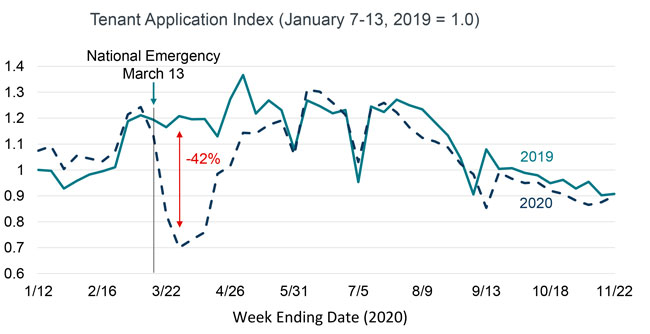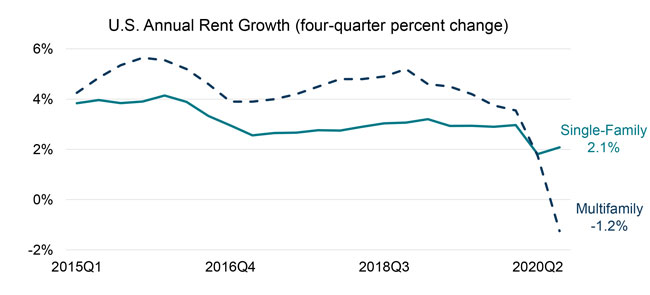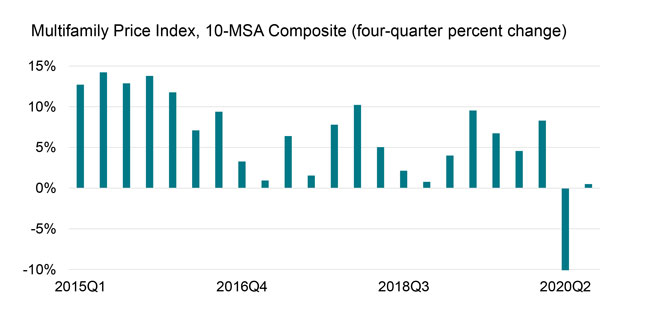
The rental market provides shelter to one-third of American households. Let’s review how the pandemic has affected tenant mobility, rents, and property values.
Applications by prospective tenants for a rental home generally pick-up each spring. The President’s declaration of a national emergency on March 13 triggered Shelter-In-Place restrictions and disrupted the seasonal rise. By the end of March applications for rental homes were down 42% from the same period one year earlier. (Figure 1) As Shelter-In-Place orders were relaxed, applications rebounded. By the end of May applications were running at the same pace as the year before and continued at the prior year’s pace for the rest of 2020.
Figure 1: Applications Rebounded By May As Restrictions Were Lifted

But the types of rental homes that tenants were looking for appears to have shifted away from high-density apartment buildings and to low-density single-family homes. Rent growth slowed after the pandemic began as applications for vacant homes declined sharply. Even though tenant applications rebounded late spring, tenants revealed a preference for lower density structures. Effective rents declined 1.2% in apartment buildings in the third quarter as vacancy rates rose and property managers often provided concessions to attract tenants. In contrast, the CoreLogic Single-Family Rent Index rose 2.1%. (Figure 2)
Figure 2: Rent Growth Slowed When Pandemic Declared

Higher vacancy and lower effective rent result in reduced net operating income. Using CoreLogic public record data to create a multifamily price index, we found that multifamily values fell about 10% in the second quarter, the first annual decline since the Great Recession. With cap rates declining to a record low in the third quarter, property values rose slightly. (Figure 3) In comparison, the CoreLogic Home Price Index for homes priced between 75% and 100% of the median – the price range that single-family rentals often are within – had annual increases of 5% and 7% in the second and third quarters, respectively.
Figure 3: Multifamily Prices Dropped 10% In 2020q2 (Year-over-year)

The first two months of the pandemic temporarily delayed tenant mobility, but the effect on tenants’ preferences for shelter appears to be more lasting. Based on rent growth and property valuations, tenant desire for single-family rental has increased at the expense of high-rise apartment buildings.
To learn more about the data behind this article and what CoreLogic has to offer, visit https://www.corelogic.com/.







Sign up to receive our stories in your inbox.
Data is changing the speed of business. Investors, Corporations, and Governments are buying new, differentiated data to gain visibility make better decisions. Don't fall behind. Let us help.













Sign up to receive our stories in your inbox.
Data is changing the speed of business. Investors, Corporations, and Governments are buying new, differentiated data to gain visibility make better decisions. Don't fall behind. Let us help.





